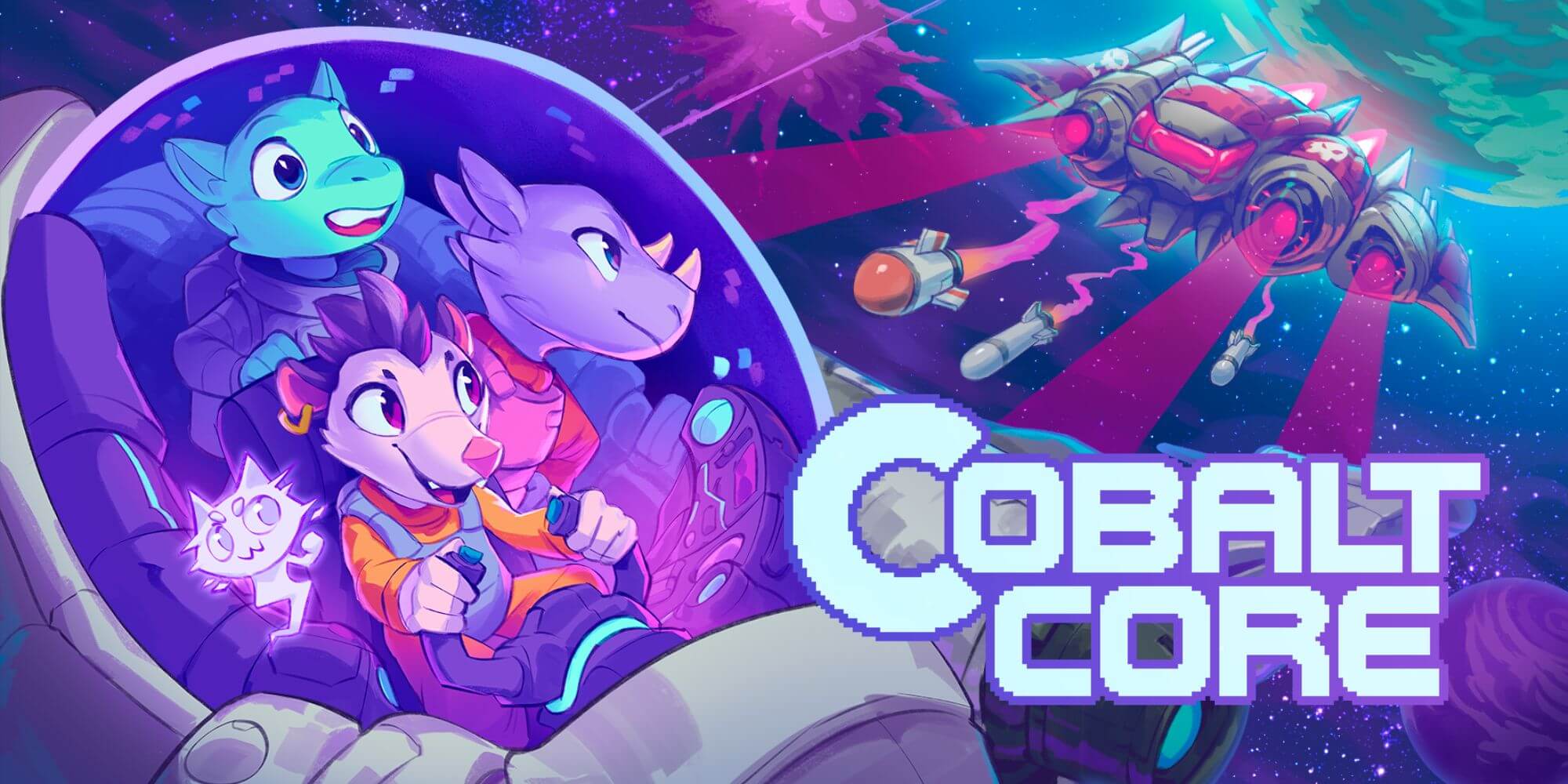Cobalt Core is one of many rogue-lite deck-builders to have released in recent years, taking inspiration from hit indie games such as Slay The Spire and Into The Breach. Cobalt Core was released back in 2023, and at the time of writing, the game has a 96% positive review score on Steam with over 1500 reviews.
However, it took a lot of hard work, dedication, and years of learning from mistakes for developers John and Ben to get Cobalt Core out of the door. I recently had the pleasure of speaking to these talented developers, who taught me a lot about Cobalt Core’s development, a bit about themselves, and what it takes to bring a game to the finish line.
- Where did you guys meet, and how did you get to making games together?
John: Ben and I met online, through mutual indie-game developer friends, Twitter, and some game development Discords. We were friends for years. I had shipped a small game on Steam before, a very small comedy adventure game called “Investi-Gator.” Ben was like “Hey, I’ve been working on a project”, this was our last game, Sunshine Heavy Industries, “I want to finish it, and work with people who are good at finishing things, because finishing things is hard.” He said, “you just finished something. Do you want to work with me?”, and I said “yes, I do.”
Ben: Also, I knew John, and knew that John was funny. But I do feel that people that finish things is the absolute, number one priority for me.
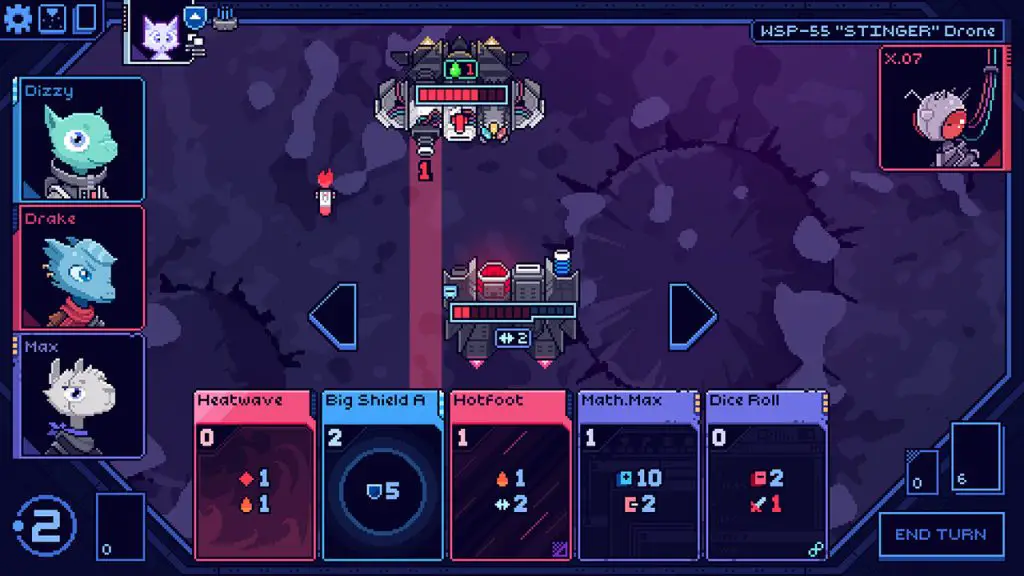
As with any creative endeavour, finishing things is notoriously difficult. It’s easy to get distracted and move on to new projects, as anyone who’s ever tried to make anything will most likely know. On this, Ben says:
Ben: I failed at releasing games for about ten years before we finally released Sunshine [Heavy Industries]. I think the biggest factor there is that I started working with other people.
- How did the idea for Cobalt Core come about?
Sunshine Heavy Industries was Ben and John’s first project together, but Cobalt Core wasn’t the first idea they pursued for their next project.
Ben: We finished Sunshine [Heavy Industries], and then we spent probably four months prototyping pretty rapidly.
A lot of those early prototypes were ditched after just 1-2 weeks of development as the two developers searched for the right aesthetic, vibe, and mechanics for their next project.
Ben: People were always asking us in Sunshine, when can we make the ships fight each other? When can we fly the ships? We thought “it’d be too obvious to do that”, and then, “unless…”
Despite this simple idea, Ben and John had yet to develop “Make the Ships from Sunshine Fight” into a fully-fledged game idea. That would come later when Ben and John found their individual ideas of what the game could be made a perfect fit.
John: The actual inception of the game was kind of two ideas that we each had separately, that just meshed really well together. In late October, 2021, we both played Inscryption. Previous to that, we were both thinking: “Maybe we should make a deck-builder rogue-like, but I don’t know how much new space there is in that genre.” And then we played Inscryption and thought, “there’s a lot of new space in that genre.” So we poked at that.
Sunshine Heavy Industries was a game about making ships out of modular, rectangular parts, and the placement of those parts mattering. How would that work if there were two modular ships, and both cared about each other’s alignment. And what if that was a deck-builder?
Fans of Cobalt Core will immediately recognise John’s idea as the system behind the game’s tactical deck-builder combat, but there was still something missing. Thankfully, that something was cooking up in Ben’s head.
Ben: To me, aside from all the mechanics that make it fun, the hook of Inscryption was having the cards talk to you, giving you lots of flavour during gameplay. I wanted to make a game where you’re on a [spaceship] bridge with your crew-mates, and they are what you’re making mechanical choices through.
John: Those two things merged right at the same time. We came up with two separate ideas that we immediately realized fit perfectly together.
This idea eventually became Cobalt Core’s crew-specific cards, which add a heap of personality and replay value to the overall experience.
John: We worked on this for about a month before we were certain it was going to be something. We pushed ourselves a little too hard before that, so once the idea for Cobalt Core was getting somewhere, we took a breather… Which we really needed. After that, we came back and asked ourselves “is this still good?” and the answer was yes, so we jumped back in.
- How long did it take to develop the game from prototype to finished product?
John: We had it working really fast, we approached this one a little bit differently than the other prototypes, and I think that’s part of why it clicked as fast as it did. For the other ones, it was essentially a very fast, focused game jam. I love game jams. Whenever I talk to younger people in the industry trying to break in, I always tell them: do game jams.
For those interested in game development, there’s never been a better time to follow John’s advice. Websites like Itch.io host regular game jams that are easy to participate in.
John: With Cobalt Core’s prototype, we decided to do things a little different. Prototypes are often a lot of programming work. Ben’s our lead programmer, and I thought the workload was kind of lopsided, because I’m primarily the designer. So instead, we went with a paper prototype.
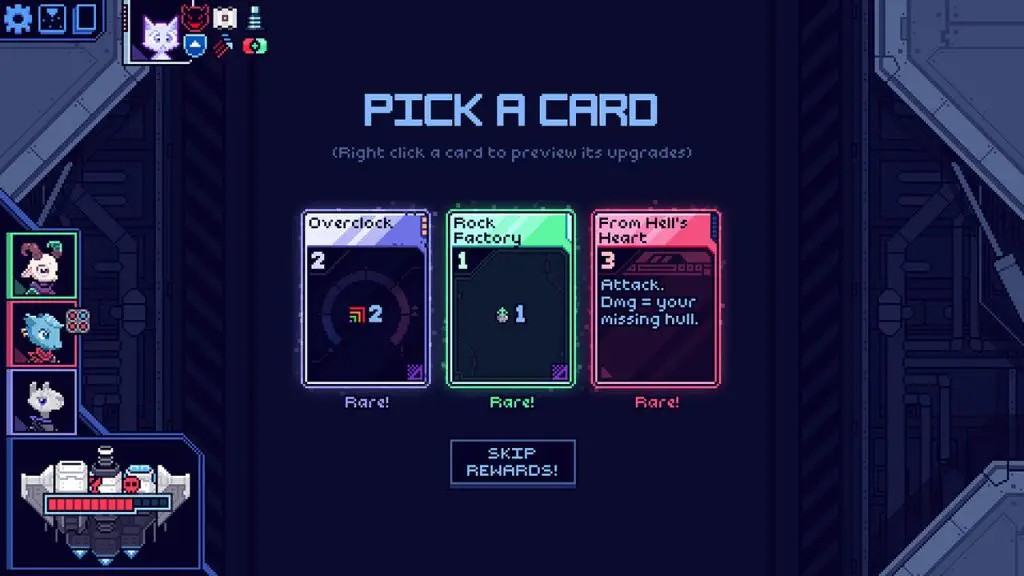
A paper prototype may sound like a simple process, but John and Ben had to go the extra mile to get things up-and-running between them.
John: We don’t live in the same time zones as each other, so we made a paper prototype in Tabletop Simulator. We made a bunch of PNGs of cards, turned them into a deck [in Tabletop Simulator], and grabbed some screenshots of spaceships from Sunshine Heavy Industries. I played the role of the computer, Ben took the role of the player, and that really quickly let us test out: one, does this feel fun? And two, what are the major things that we need to be doing?
Ben: It’s certainly harder if you’re making a platformer, but for turn-based games, at least in the early phase, I think it’s a good sign if it’s possible to do by hand. Cobalt Core grew into a game that would probably be annoying to play in real life, but the core systems don’t require large amounts of computation.
- What about the character dialogue and overall narrative, did you always intend for Cobalt Core to have plenty of dialogue interactions between characters? The barks in particular are quite dynamic, was that hard to implement systemically?
Ben: It was right from the start. We knew what we wanted, we want them to comment about events that are happening. The system is similar to Hades, with all the dialogue in a large database. Every time the game has a beat where it might say something, for example during combat, after a player plays a card or an enemy moves, it looks into that database. Everything is grouped by conversation and has a ton of bespoke filters on it that ensure certain dialogue happens at the right time. Conceptually, it’s pretty straightforward once you get your head around it. Very little of the dialogue in the game is hard-coded, adding a conversation doesn’t require code, everything is done through this story database.
- When did Brace Yourself Games get on board? Did you reach out to them, or vice versa? What was it like to work with them?
John: We hadn’t revealed the game to the world yet. We reached out to a few publishers, not that many.
Ben: John did all the research by the way, shout out to John, he did all the work on getting a publisher.
John: There’s a lot of publishers out there. We did our research, looked into a lot of them, and tried to find those who had published games that were somewhat similar to what we were trying to do. In the case of Brace Yourself Games, they’d published Crypt Of The Necrodancer, which is not exactly the same as Cobalt Core, but it’s a pixel-art rogue-like. The actual turnaround between when we contacted them and when we signed was pretty fast.
Ben: They’ve been great to work with.
- What was the biggest challenge in creating the game?
Ben: Localisation is… A lot of work. Localising the dialogue was actually the easiest part, I just wrote a script to pull the dialogue out of the database and map it to the other languages. Going through and organizing every other piece of text in the game, like the card descriptions, was a real pain. It was not fun.
John: There were roadblocks that we didn’t anticipate. Some of the cards have text on them, for example, there’s one card called ‘Wave Charge’, whose effect is – and it says this on the card – ‘Gain a Wave Beam’, which is the name of another card. We thought we’d be smart and ensure there were no problems with localisation by making it so that the actual sentence that was being translated was: ‘Gain a ____’, and the blank was automatically filled in by the computer.
To me, this sounds like a great idea. But, as John explains, this eventually created a real problem.
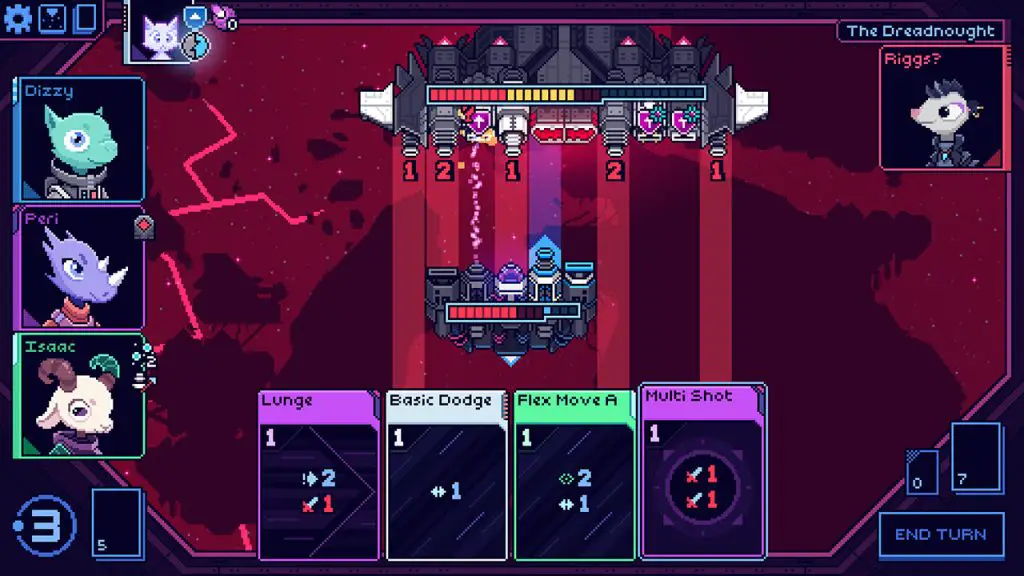
John: We went through the effort to make sure that every time we name dropped another card in the game, it was automatically generated instead of being re-translated. And then we sent it off to them, and they said “Hey, you said the space on the cards is really tight, and we need to be concerned about how long the total string is, right?” And we said yes, that’s very important. They said “How are we going to determine if a string fits on the card or not, if we don’t have the full sentence to translate and check?” So we had to undo all of that work.
As hard as localising the game was, Ben and John had another problem: writing the end of the game.
John: Specifically writing the end to the game was a lot harder than any of the other story stuff. Ben and I both wrote the game. That means we’re both being extra picky about the ending, and we generally line up on all of this stuff, but when you’re trying to be that picky about every word, we’re both in there editing each other’s sentences, and it’s tiring.
Ben: Especially since we were doing it while trying to crunch to finish, all before localisation happened.
John: I forgot those overlapped… There were a couple of oversights regarding our schedule, and that cut the time we had to finish the writing and localisation down from a month to just a couple of weeks.
- What part of developing Cobalt Core did you enjoy the most?
Ben: For me, it was making the art. And the writing, when it was flowing.
John: Which was usually.
Ben: Most of the time, maybe half the time, I’m programming. Programming is the kind of work that creates more work. Once you’ve admitted you need to program something, you realise you might have to come back and change it. Versus art, you can revisit art, but making one sprite can’t break ten other sprites, they don’t have to all be compatible. With the story, it’s fun when it’s flowing, but it becomes real work sometimes.
John: I liked most of it, except the localisation.
Ben: This was a very fun game to make because we knew early what it was going to be, and it met our expectations, because we have pretty sober expectations of what we’re capable of making. For me, at least, I only burn out when I feel like what I’m doing is not productive.
John: I totally agree. If something feels pointless or futile, that’s where the burnout kicks in, and that just never happened with this. We kept the goals small, and so we were able to see our progress quickly and easily.
- Was there anything that ended up getting cut from the game?
John: Very little got cut completely.
With a strong vision for the game’s design, and by keeping that design flexible, Ben and John were able to re-purpose ideas that would otherwise be left on the cutting room floor.
Ben: We cut a lot of stuff before we did it. We had an idea that maybe between runs they’d be a hub world, what would that look like, do you walk around? We could never hone it down to something that wasn’t big scope creep. That just ended up being the memory screen, instead.
John: In terms of gameplay design mechanics, I would say, if we wanted to do a card but decided it would be too complicated, maybe it would become an artefact instead. There were only maybe a couple of cards that we never ended up finding a home for.
- What were your biggest inspirations for the game?
Ben: Inscryption.
John: Yeah. You can see Slay The Spire, that one’s obvious. Everyone compares us to FTL [Faster Than Light]. I see what they’re saying, pixel-art, rogue-like, spaceship game, sure. But we were really inspired by Into The Breach, the other game by Subset Games. If we made a list, it’d be Inscryption, Hades, Into The Breach, Slay The Spire.
Ben: Yeah, Hades for story stuff and vibe. If you look at the story of Hades on a surface level, you’re trying to escape Hell over and over, and you’re dying every time. That sounds awful, but the vibe of the game is great, everyone’s having a great time, and the story beats that are more serious feel more earned. We wanted the same kind of thing, where it’s breezy and funny.
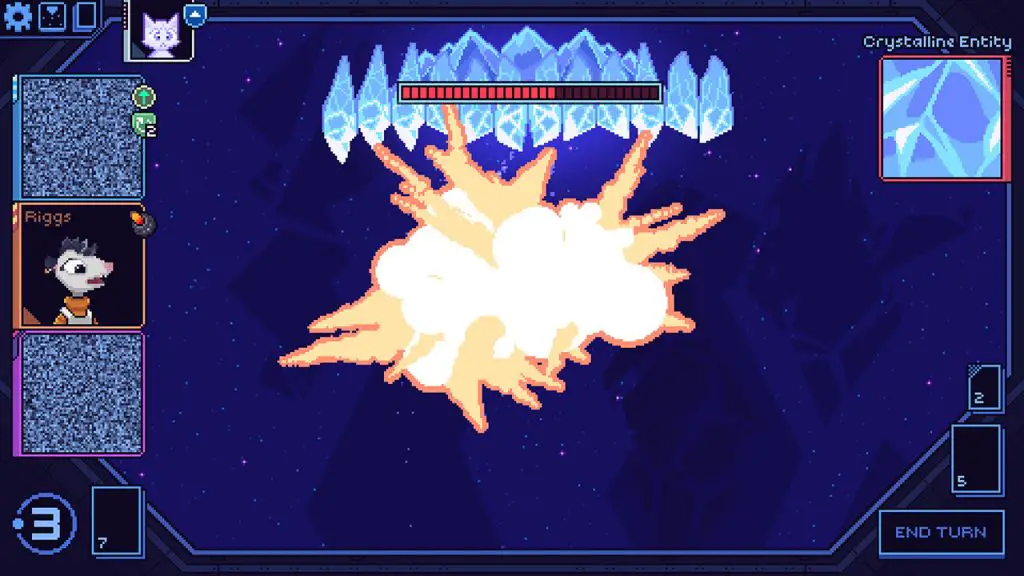
- What are your future plans? Will you be moving straight to a new game, or expanding on Cobalt Core?
John: Still Cobalt Core for now. Although, we were going very hard in the last few weeks before launch, so we’re trying to take it easier. There’s some stuff we want to add to Cobalt Core, we’ve been promising people that we’re going to add alternate bosses at some point, and probably a daily mode, which I’m looking forward to. But yeah, at some point in the future, there will definitely be another game from this studio. We like working together, and we just should.
Bonus: Any advice to aspiring game developers?
Ben: Prototype. Do game jams. Finish small things. I made two big things that were ill-defined, that didn’t have a tight deadline or an achievable MVP for way too long. If you finish one thing, you suddenly have a roadmap, you know where you are in a project when you’re in the next one. [Before Cobalt] I hadn’t finished anything the size of Sunshine Heavy Industries, and often in the development I would think “how much is left to do?” and I didn’t know. But once we’d finished Sunshine and taken it to the end, during Cobalt Core I was very confident about our estimates.
John: Just meet people. Talk to other people and meet them and listen. One, because being cool and getting out there and being a nice person that people want to work with is a huge doorway in. And two, they’re going to know stuff that you don’t, that you can learn from them.
Ben: I know a lot of game developers have a dream project they want to make. Forget about that. It’s impossible, unless your dream project is well-scoped, in which case you don’t need my advice, you already know what you’re doing. If your dream project is a lofty goal, you’re sure to not finish it alone, and if it’s your dream project you’re going to have a hard time getting eight people to help you make it. What is it about your dream project that you love? Pick one feature from that and make that.
John: I feel like dream projects and soul-mates are the same thing. You can keep hoping that it’s going to work out, or you can find a project that you feel really good about to start with, and work to make it perfect for you.
A massive thank-you to Ben and John for taking an hour out of their day to talk to me about the development of Cobalt Core. These dedicated developers were a joy to chat with, and I’m looking forward to seeing what they make next.


